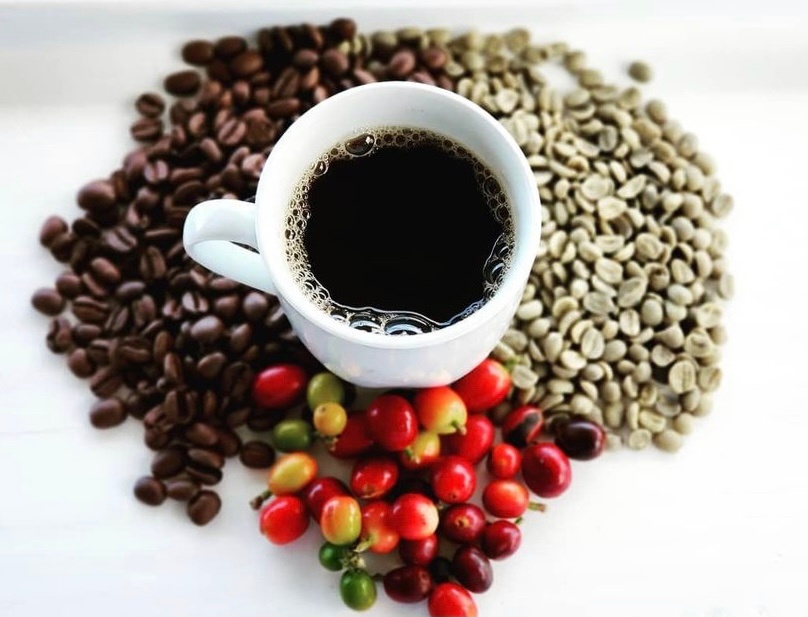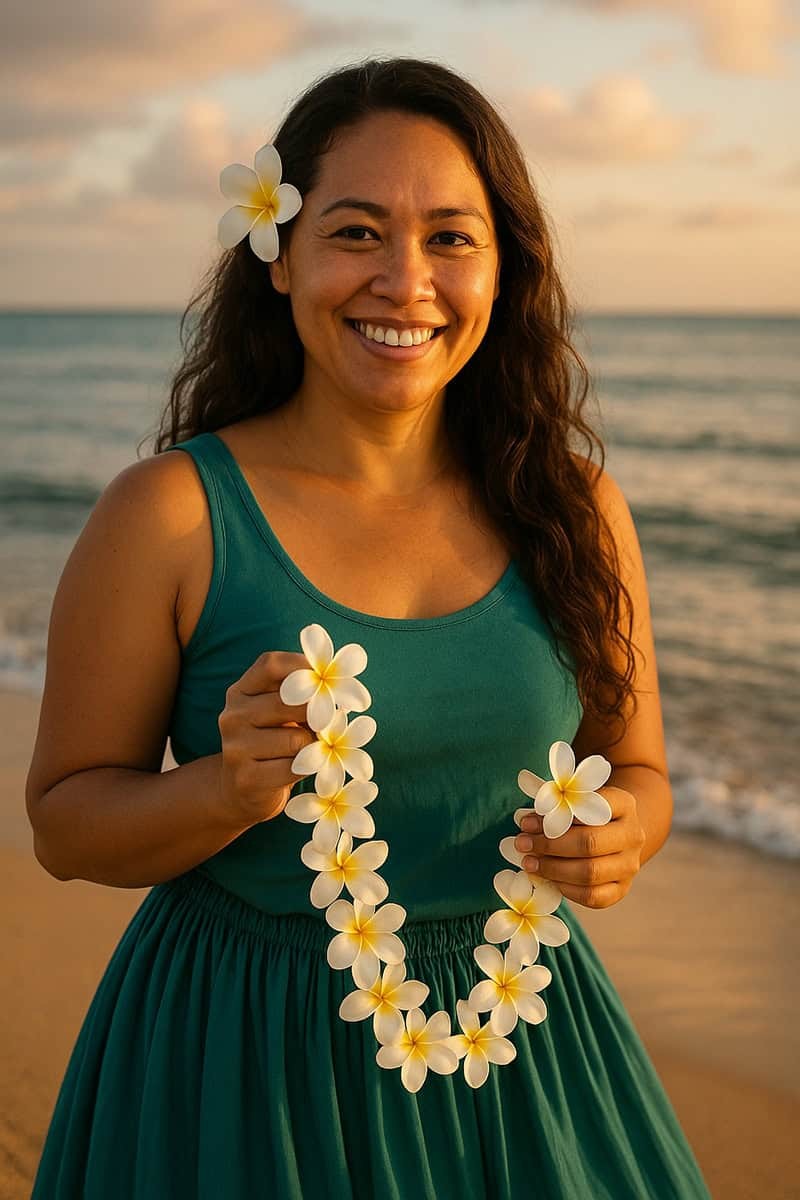
“Brew Your Best Cup”- Coffee Brewing Workshop
Heavenly Hawaiian Coffee Farm • Farm • Holualoa, Island of Hawaii • Hawaii
.6Gw0_kDd_OcGYC.webp)
Following the footsteps of Hawaiian royalty through Historic Kailua Village

Written by a Local Cultural Expert
Leilani AkoFifteen minutes south of Kona airport sits a sunny oceanfront town with royal roots. Long before shops and restaurants lined these streets, Kailua-Kona was a sleepy fishing village and royal retreat. In the early 1800s, this village served as the political and spiritual center of the Hawaiian Kingdom under King Kamehameha I.
Picture Kailua around 1812. Kamehameha the Great had just united all the islands. He returned here from Oʻahu to establish his royal compound at Kamakahonu, on the north end of the bay. The village became the kingdom's capital for several years. Kailua Bay's shores bustled with royal canoes and thatched structures. Evening gatherings at Ahuʻena Heiau, Kamehameha's personal temple, drew chiefs and advisors by torchlight.
Here, monumental events in Hawaiian history unfolded. The passing of a great king. The end of the ancient kapu religion. The dawn of Christianity in the islands. All within walking distance of where you stand today.
Fast forward to now. Kailua-Kona is a lively yet laid-back hub for visitors and locals alike. Aliʻi Drive, the main road, mixes island-style boutiques with art galleries and cafes. Ancient historical sites sit alongside modern attractions. You'll find beachgoers in flip-flops, cruise ship passengers sampling shave ice, and kupuna (elders) enjoying ocean breezes from shaded benches.
Look beyond the modern storefronts. The past is ever-present here. Stone walls and foundations along the shore have stood for centuries. Plaques mark sites where Hawaiian kings made history. The village core is compact - you can walk end to end in twenty minutes. But it holds stories spanning seven hundred years.
Today, Aliʻi Drive's promenade offers similar views of church and palace. But you'll share the scene with pedestrians, cars, and the occasional trolley. The charm remains, though. Kailua still feels like a village, especially in the golden hours of morning and late afternoon when sun lights up Kailua Bay. You can almost imagine the aliʻi walking alongside you.
Our tour begins at Kailua Pier, both a modern gathering spot and a portal to the past. If you arrived by cruise ship, you stepped ashore here. If you drove into town, the pier area has parking (spots fill up fast) and public restrooms for a pit stop.
Morning is ideal to start. The air is cooler, the ocean often glassy. You might catch paddlers launching outrigger canoes from the small beach nearby. From the pier, take in the sweeping vista of Kailua Bay. On one side, the curve of Aliʻi Drive with shops and coconut trees. On the other, calm waters of Kamakahonu Bay backed by a temple reconstruction - Ahuʻena Heiau, our first historic highlight.
Just steps from the pier stands a large banyan tree whose canopy offers welcome shade. This banyan was a gift from Queen Kapiʻolani over a century ago. It's a fitting meeting point, linking the present town to its royal past.
Here at Kamakahonu, you stand where King Kamehameha I ruled from 1812 until his death in 1819. Ahuʻena Heiau - the eye-catching thatched temple with a golden figure on top - was Kamehameha the Great's personal heiau (temple). He rebuilt it here around 1812 and dedicated it to Lono, the god of peace and prosperity.
Ahuʻena Heiau is a sacred landmark and National Historic Landmark. Please respect the site by viewing it from the beach and pier area only. Photography is allowed from outside, but do not enter the temple grounds.
Every night, the king's highest advisors gathered at Ahuʻena Heiau by torchlight. They discussed matters of state within its walls. It was essentially the kingdom's capitol building in those years, both religious and political center.
On this very ground, monumental events in Hawaiian history occurred. On May 8, 1819, in the early morning darkness, King Kamehameha I died here at Kamakahonu. His passing marked the end of an era. Shortly after, his son Liholiho (Kamehameha II) - under Queen Kaʻahumanu's counsel - made a radical break from tradition right here in Kailua. He abolished the kapu system, the ancient code of religious laws, by eating with women in public.
Stroll about four hundred feet south from Kailua Pier. You'll find yourself before a stately stone church with a tall steeple. This is Mokuaikaua Church, established in 1820 - the very first Christian church built in all of Hawaiʻi.
Its rough coral-lime walls and New England-style louvered windows stand out in this tropical setting. The church's Hawaiian name, "Mokuaikaua," honors the chiefess who donated the land. For visitors, what matters is that Mokuaikaua represents the seismic cultural shift that Kona experienced in the 19th century.
Remember those missionaries who arrived in 1820? The aliʻi of Hawaiʻi - including Regent Queen Kaʻahumanu - decided to welcome them. Perhaps they saw new alliance opportunities after the kapu system was overthrown. The missionaries, led by Reverend Asa Thurston and his wife Lucy, lost no time setting up a church in Kailua-Kona.
By 1823 they built a simple thatched meeting house for services. As the congregation grew (many Hawaiians were curious and began converting, including some royalty), they needed a more permanent structure. Between 1835 and 1837, the community constructed the stone church you see today. They used lava rocks from a ruined heiau and mortar made with burned coral lime.
Mokuaikaua Church's architecture blends Hawaiian and Western techniques. The exterior walls - three feet thick - are made of rough-cut lava rock held together by mortar of sand, coral, and burnt lime.
Step inside to see a high vaulted ceiling of native ʻōhiʻa wood and koa wood panels. The interior feels like an inverted ship's hull - fitting, because native Hawaiians with guidance from ship carpenters helped shape it.
Take a seat in one of the wooden pews, hand-hewn in the 1800s. Soak in the sense of history. Notable aliʻi worshipped here. King Kamehameha II (Liholiho) attended Christian services during the missionaries' first year. By the 1830s, King Kamehameha III (Kauikeaouli) had also become closely aligned with Christianity.
Over the years, Mokuaikaua became a cornerstone of the community. A place of worship, a school (in early missionary days), and even a refuge during storms (those thick walls are sturdy). Mokuaikaua Church was designated a National Historic Place in 1978. The congregation still holds weekly services, continuing an unbroken line since 1820.
Set along the seawall on Aliʻi Drive is elegant Huliheʻe Palace, one of only a few royal palaces in the United States. With its lime-plastered stone walls, second-story balcony, and green shutters, Huliheʻe exudes 19th-century charm.
It was constructed in 1838 by Governor John Adams Kuakini, who was the island of Hawaiʻi's governor (and Queen Kaʻahumanu's brother). Kuakini built himself this stately residence just one year after finishing Mokuaikaua Church across the way. Foreign sailors and local craftsmen built Huliheʻe out of native lava rock, coral mortar, and fine woods like koa and ʻōhiʻa.
Huliheʻe Palace quickly became a favorite retreat for Hawaiian royalty. Kuakini hosted aliʻi here. When he died, the palace passed through various high-ranking hands (including Princess Ruth Keʻelikōlani). Practically every king or queen of the Hawaiian Kingdom up to Liliʻuokalani spent time at Huliheʻe.
It wasn't the official royal residence (that was ʻIolani Palace in Honolulu after 1845), but it was the preferred summer home and vacation spot. Who wouldn't want to spend time in breezy Kailua-Kona, with its warm dry weather and rich fishing grounds?
Inside Huliheʻe Palace (now a museum operated by the Daughters of Hawaiʻi), you'll find six large rooms filled with artifacts and antique furniture from the royal era. Stepping through the heavy koa wood door is like stepping back into the 1880s, the time of King Kalākaua and Queen Kapiʻolani.
Each room is lovingly curated. Victorian settees and four-poster beds. Quilts made by queenly hands. Portraits of monarchs. Cabinets displaying precious feather lei and kahili (royal standards). One room holds King Kamehameha's imposing wooden spears and clubs. Another displays fine china from King Kalākaua's court.
Take a peek out to the ocean from the palace's front lanai (porch). Huliheʻe sits only yards from the water's edge. In the 19th century, residents could have watched canoe races or fishermen right from those lanai. To the palace's north side is Niumalu Beach (a tiny cove). To the south was once Kiʻope Pond, a royal fishpond that supplied fresh fish to the aliʻi.
A guided or self-guided tour of Huliheʻe typically takes thirty to forty-five minutes. The museum is open to the public Wednesday through Saturday (with self-guided tours on Saturdays) and there is a modest admission fee for upkeep.
The formal walking tour may conclude at Huliheʻe Palace, but Aliʻi Drive itself is an attraction that deserves to be savored as you continue south through the village. Often called the "front street" of Kailua-Kona, Aliʻi Drive runs right along the ocean. It offers beautiful views of the bay on one side and a charming mix of storefronts and eateries on the other.
Take your time as you stroll this one-mile stretch from Huliheʻe Palace toward the south end of the village (near the Royal Kona Resort). Along the way, you'll find plenty of ways to engage all your senses and pick up souvenirs or snacks.
One block south of Huliheʻe is the Kailua Village Farmers Market, located at the corner of Aliʻi Drive and Hualālai Road (look for white tents and colorful produce). This lively market is open Wednesday through Sunday, 7am to 4pm. It's a must-stop if you want to sample local flavors or buy handmade gifts.
Under the tents, Big Island farmers and artisans sell fresh tropical fruits (sweet pineapples, mangoes, dragonfruit), flower leis, Kona coffee, macadamia nuts, and baked goods. They also offer crafts like wood carvings, shell jewelry, sarongs, and Hawaiian quilts.
Continuing along Aliʻi Drive, you'll pass historic buildings repurposed for modern use. One notable one is the old Kona Inn, about halfway down Aliʻi. It's a long, low oceanfront building now housing shops and the Kona Inn Restaurant. The Kona Inn was Kailua's first hotel, opened in 1928 when tourism was just a trickle.
Aliʻi Drive is also the shopping hotspot of West Hawaiʻi. Thanks to cruise ship visitors and vacationers, you'll find everything from typical souvenir stands (T-shirts, keychains, and hula dancer dolls) to high-end Hawaiian art galleries. The highest concentration of shops is roughly between Huliheʻe Palace and the street leading up to the post office (Palani Road) and a bit beyond.
As you walk, look seaward frequently. Between buildings, you'll catch glimpses of bright blue ocean and bobbing boats. Aliʻi's seafront seawall doubles as a bench in many places, so feel free to sit and watch waves crash on the lava rocks below. You might see surfers at the break called "Honl's" a bit down the road, or snorkelers in the small sandy coves that dot the shoreline.
1812
Kamehameha establishes royal compound
1819
Kamehameha dies; kapu system ends
1820
First missionaries arrive
1837
Mokuaikaua Church completed
1838
Huliheʻe Palace built

Heavenly Hawaiian Coffee Farm • Farm • Holualoa, Island of Hawaii • Hawaii

